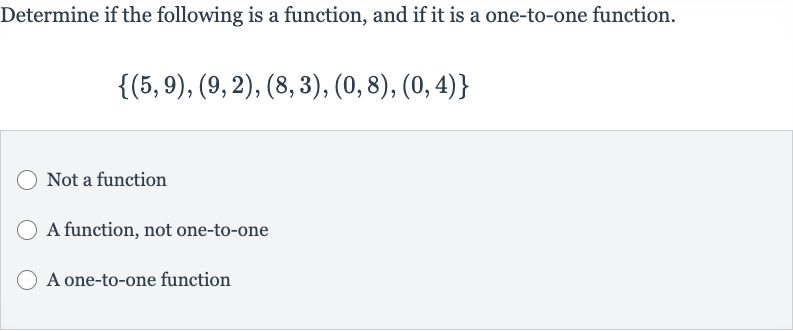Full solution
Q. Determine if the following is a function, and if it is a one-to-one function.Not a functionA function, not one-to-oneA one-to-one function
- Check Function Definition: To determine if the given set of ordered pairs represents a function, we need to check if each input (first component of each ordered pair) maps to exactly one output (second component of each ordered pair). We will examine the set of ordered pairs for any repeated inputs with different outputs.
- Analyze Ordered Pairs: Looking at the set of ordered pairs , we can see that the input is associated with two different outputs: and . This means that the same input gives us two different outputs, which violates the definition of a function.
- Conclude Not a Function: Since we have found that an input '' maps to more than one output, we can conclude that the given set of ordered pairs does not represent a function. There is no need to check if it is a one-to-one function because it is not a function in the first place.
More problems from Intermediate Value Theorem
QuestionGet tutor help

